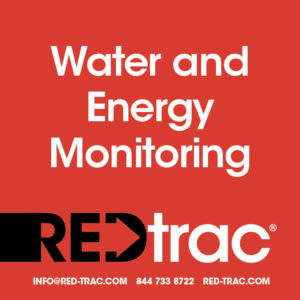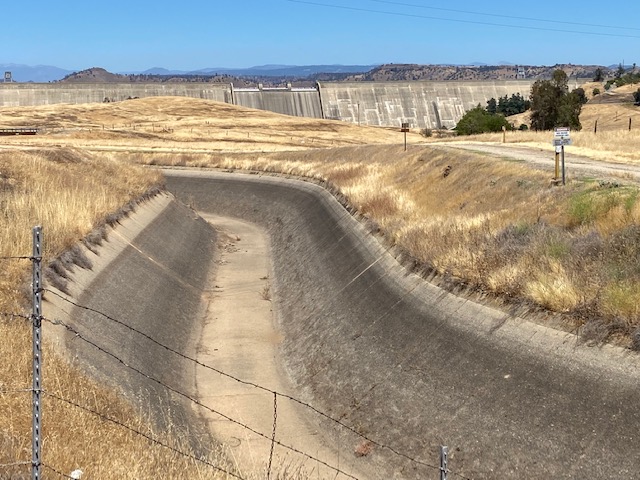The Madera County Board of Supervisors acting as the board of directors for the Madera GSAs that cover “the white areas” held a special meeting on March 9, 2022. These days, the meetings are in person at the county government center in Madera and also webcast regularly allowing greater public participation. The online coverage also allows remote participation by board members and in this case, Rob Poythress was virtual. A closed session started at 9 a.m. for consideration of two items of litigation, both involving the GSAs. One is a suit brought by Madera ID and Madera ID GSA and the other suit has been brought by members of the local cattlemen’s association. There was no reportable action or public comment.
The Meeting
Supervisor Tom Wheeler called the open session to order at 10:02 a.m. on the single agenda item, further consideration of the study on rates being done by Raftelis. To date, a charge of $24 per acre along with grant funding allowed the development of the GSP. Rates to be charged on irrigated acres are necessary to complete the many projects required, and it is anticipated that a so-called 218 vote to approve these rates by affected property owners will be required.
As usual, Stephanie Anagnoson, county director of water and natural resources, led the discussion reviewing projects as requested by the Board at the last meeting. She identified recharge, the proposed Sites Reservoir project, domestic well mitigation and land repurposing to increase water supplies and curb demand. She introduced Kevin Kostiuk of Raftelis who went into considerable detail about projected costs of these projects and the rates that would be required.
Recharge
John Davids of Davids Engineering added more detail about recharge projects. Recharge could be conducted on-farm or in dedicated basins harnessing flood flows. Flood flows for recharge are estimated at approximately every three years on average (35 percent annual chance). Individual recharge projects in some cases depend on water rights acquisition and design timeline. Financing assumptions for planning purposes from the county’s municipal advisors: five-percent interest rate, 30-year term, level payments. Much more detail about costs and resulting water to be put back in the aquifer was presented. A question was asked if water rights were all in place. Davids’ response was that discussions are ongoing with the State Water Board and the Bureau of Reclamation. If rights are not in place at the time construction is to begin, the Board will have the opportunity for a “go – no go” decision. Property owners can find information on the county website about applying for doing recharge with funding support.
chance). Individual recharge projects in some cases depend on water rights acquisition and design timeline. Financing assumptions for planning purposes from the county’s municipal advisors: five-percent interest rate, 30-year term, level payments. Much more detail about costs and resulting water to be put back in the aquifer was presented. A question was asked if water rights were all in place. Davids’ response was that discussions are ongoing with the State Water Board and the Bureau of Reclamation. If rights are not in place at the time construction is to begin, the Board will have the opportunity for a “go – no go” decision. Property owners can find information on the county website about applying for doing recharge with funding support.
Supervisor David Rogers said he loves big projects, but he urged that many smaller projects and existing basins not be overlooked. Davids offered assurances that opportunities to enhance existing infrastructure will be fully evaluated. Rogers also expressed concerns that with dropping aquifer water levels, there might be salt water intrusion from the coast. On that point, it was noted that hydrologist Peter Leffler might respond during his discussion of the domestic well mitigation program.
opportunities to enhance existing infrastructure will be fully evaluated. Rogers also expressed concerns that with dropping aquifer water levels, there might be salt water intrusion from the coast. On that point, it was noted that hydrologist Peter Leffler might respond during his discussion of the domestic well mitigation program.
Supervisor Brett Frasier asked how certain are we that we can obtain grant funding to cover the estimated average cost of $4 million per recharge project. Anagnoson says there is no certainty and that rate funds might well be needed. Frasier also said that with neighboring GSAs and water districts all looking for additional supplies, how can we be certain that we can deliver on the projected supplies, even in wet years.
Sites Reservoir
The second supply side project is the proposed Sites Reservoir, north of Sacramento. Jerry Brown, director of the Sites Project Authority, was present online for this part of the discussion. Madera GSAs participation is expected to provide annually 10,000 AF. Construction will be from 2024-2030 with first deliveries estimated in 2032-33. Flood flows in wet years from the Sacramento River will be captured and stored here. Madera cash needs include buy-in to participate, annual future debt service, and annual future operations costs. The county GSAs cost share based on annual average yield participation: six percent of total costs, nearly $10 million, with costs then allocated between Madera and Chowchilla subbasins.
Construction will be from 2024-2030 with first deliveries estimated in 2032-33. Flood flows in wet years from the Sacramento River will be captured and stored here. Madera cash needs include buy-in to participate, annual future debt service, and annual future operations costs. The county GSAs cost share based on annual average yield participation: six percent of total costs, nearly $10 million, with costs then allocated between Madera and Chowchilla subbasins.
Well Mitigation
Domestic well mitigation is another essential piece of the GSP puzzle. Kostiuk said that needed repairs for eligible wells would average $30,000. Peter Leffler of the consulting firm Luhdorff and Scalamini provided more detail about expected needs and costs. In response to the earlier question, he said salt water intrusion is not an issue here in the Central Valley.
The fourth component of the plan is “land repurposing” which means taking irrigated acres out of production. The term being used is “SALC,” which is the acronym for Sustainable Agricultural Land Conservation. Kostiuk explained that Raftelis calculates this will result in approximately 50 percent of the reduction in water use… or demand management. Landowners will voluntarily enroll acres on an annual basis and receive payments in the range of $600 to $750 per acre.
Adding additional detail to this discussion was Duncan MacEwan, managing partner at ERA Economics consulting firm. He said SALC would be phased over time, in part to control costs and also to allow adjustments. A key point is that land enrolled in SALC would still pay the full GSA fees; otherwise, the costs to the remaining irrigated acres would increase to bear those costs. No particular crop or area is targeted for SALC.
After Kostiuk presented the proposed rates for the three subbasins, Anagnoson showed two examples of taking 20 acres out of irrigated production within a 100-acre parcel. If SALC is not applied for, the full allocation of water for the 100 acres can be applied to the 80 acres remaining. On the other hand, if SALC is applied for, then the allocation would only be the amount of water on the 80 acres remaining, but there would be a SALC payment and no farming costs on the 20 acres. For the sake of comparison, Anagnoson showed recent rates for water sold to farmers in the Madera ID and Chowchilla WD.
She finished up with a brief discussion of the penalties that could apply to property exceeding its water allocations. She said this requires separate action by the Board but that growers need to have this information to make informed calculations about farming decisions. Currently being considered are two distinct charges to be levied: a penalty per SGMA statue at a maximum of $500 per acre and a replacement water charge, estimated at $600 -$650 per acre foot. The total charge would be the penalty amount plus the replacement water rate.
decisions. Currently being considered are two distinct charges to be levied: a penalty per SGMA statue at a maximum of $500 per acre and a replacement water charge, estimated at $600 -$650 per acre foot. The total charge would be the penalty amount plus the replacement water rate.
With the presentations concluded, the board members began their discussion. Supervisor Poythress thanked all for the presentation and said since passage of a 218 vote is needed, it should be presented in a way growers can easily relate to. He said the that the 28 inch allocation is the equivalent of 2.33 per AF (acre/feet). At the rates being considered this is the equivalent of $110 per AF, which he considers relatively cheap in today’s environment. Poythress asked for comment and Anagnoson noted that the rates for the first five years being considered could be set on a fixed basis, with no volumetric component thereby providing certainty and a lower rate as the allocation is reduced.
Supervisor Rogers said he appreciated the Poythress description while Supervisor Frasier noted with a smile that it had taken quite a number of meetings to come back to the fixed rate scenario that staff had recommended. Anagnoson in the same spirit said she wouldn’t remind him of that!
noted with a smile that it had taken quite a number of meetings to come back to the fixed rate scenario that staff had recommended. Anagnoson in the same spirit said she wouldn’t remind him of that!
Chairman Wheeler while aware of the consensus on a fixed rate for five years asked what would happen if some of planned projects don’t come through. Anagnoson said the money can still be collected after 218 approval. Funds could be refunded or applied to land repurposing or domestic well mitigation. The Board could make that decision. Wheeler replied that he didn’t want to rush a decision and then opened the meeting to public comment among those in the room.
Comments
Speaking first was Mark Peters who identified himself as a grower in the Madera Subbasin. He urged the Board to make a penalty decision at the same time the rates are decided. He said if the 85,000 irrigated acres in the Subbasin use six inches of water above the allocation, the amount of money collected in penalties will be significantly more than the amount from the rates. He also urged caution about the water that might come from the Sites project… based on the costs he’s seen that water could be at a rate of $960 per AF.
Another local grower, Norman Allender, asked where are surrounding counties in the implementation of allocations. He said being out in front sets you up for significant pushback. He asked that the SALC details be available at the time of a 218 vote. Maybe it’s better to be in the middle of the pack, he said.
Michele Lasgoity, local rancher and Cattlemen’s Association leader, asked the Board to be aware of the “magnitude of what you are exacting on the growers.” She pointed out that unlike the costs of surface water, the PG&E bill needs to be paid for pumped groundwater, amounting to some $160 to $200 per A/F, which would be in addition to the new SGMA rates. She said she agreed with Allender about the burden of being on the cutting edge.
Clay Daulton who said he is a non-irrigating rancher who served on the Advisory Committee, talked about activities in the Chowchilla Subbasin. He asked if the water that percolates from recharge projects affects the allocation of SY water. Daulton waited for an answer when Chair Wheeler explained that the supervisors and staff do not respond to questions from these public comments but would follow up at the end of the comment period, either publicly or directly to the questioner.
Moving to the online participants, grower Igal Treibach was recognized, speaking about small collection basins on private property. He asked if recharge wells were being used to get the water into the aquifer faster. He also asked if private investment in recharge would qualify for credits against the rates as payment.
With two comments, Stuart Wyle who said he is a small citrus grower said he didn’t understand the 100-acre example used earlier in the presentation. He said it appeared to him that taking more than 20 acres out of production would result in a reduced allocation. He also said he had no idea what the water districts are doing and some more transparency is needed. (Editor’s note – signing up for WaterWrights will provide a lot of detail about water districts across the Valley!)
Madera County pistachio grower Wayne Cedarquist commented on penalties and Irriwatch. He said satellite results showed more than a foot and a half per acre compared with what his water meters showed. He also said that the proposed water from the Sites project at $1,000 per acre foot would be worthwhile for him if he added one-quarter AF on his high yielding pistachio orchards.
Speaking for the Madera Ag Water Association, a group of “white area” growers, was Jack Rice. He said he appreciates the work done to date. He observed that in essence the SGMA fees are paying to have water cut back. He said farmers recognize that fees are essential to maintain local control, but they are complicated, and people need time to understand them. He said he appreciates what the new “old” rate proposal will do, indicating his support for a single, fixed rate. Also online, Matt Brady asked how the funds would be used resulting from the $500 penalty charges.
them. He said he appreciates what the new “old” rate proposal will do, indicating his support for a single, fixed rate. Also online, Matt Brady asked how the funds would be used resulting from the $500 penalty charges.
With no other requests to speak, the public comment period ended. Supervisor Poythress commented that considering his own farming operations, his goal was to remove enough acreage from production by pulling trees so that he did not exceed the allocation on his farm unit, thereby incurring penalties.
Anagnoson responded to some of the questions asked by the public. She said the funds from penalties would be used for the specified projects. She observed that Madera may appear to be in the lead because of the large quantity of ag lands compared to some counties. She said, “We may be towards the front, but we are not leading.” She referenced Ms. Lasgoity’s comment saying that board and staff do understand the impact of their decisions. She replied to Daulton saying that recharge water would have no effect on altering the SY amounts. Replying to Treibach, she said that it’s very possible credits towards fees could be granted to individuals putting in private recharge projects. She also said that property owners can monitor their own water use without Irriwatch as long as their pumps are installed to manufacturers specifications and operations are verified by the county.
towards fees could be granted to individuals putting in private recharge projects. She also said that property owners can monitor their own water use without Irriwatch as long as their pumps are installed to manufacturers specifications and operations are verified by the county.
She went on to say that a decision was needed on rates so that public notices and 218 voting could be conducted prior to the July 1 start of the fiscal year. She said that staff and consultants would bring back a final proposal with fixed rates for approval at the March 29 meeting. The meeting adjourned at 12:10 p.m.
Note: the full detail presented at this meeting can be found on the county website at https://www.maderacountywater.com/wp-content/uploads/2022/03/Rate-Study-Special-Meeting-Final.pdf
DISCLAIMER OF RESPONSIBILITY; Waterwrights strives to provide clients with the most complete, up-to-date, and accurate information available. Nevertheless, Waterwrights does not serve as a guarantor of the accuracy or completeness of the information provided, and specifically disclaims any and all responsibility for information that is not accurate, up-to-date, or complete. Waterwrights’ clients therefore rely on the accuracy, completeness and timeliness of information from Waterwrights entirely at their own risk. The opinions expressed in this report are those of the author and do not represent any advertisers or third parties.
ALL RIGHTS RESERVED. Copyright 2022 by WaterWrights.net
Madera County is comprised of three subbasins, designated by the CA Department of Water Resources as critically overdrafted, and “high priority”: (1) the Chowchilla Subbasin; (2) the Madera Subbasin; and (3) a portion of the Delta-Mendota Subbasin. Each of these subbasins submitted a Groundwater Sustainability Plan (GSP) by January 31, 2020. These subbasins are required to achieve “sustainability” by the year 2040. The method by which sustainability will be achieved will be illustrated in the GSP, which was be drafted in partnership by the irrigation district, water districts, cities and Madera County. The Madera County Groundwater Sustainability Agency (GSA) is administered by the Madera County Department of Water and Natural Resources: Stephanie Anagnoson, Director, 200 W. Fourth Street, Madera, CA 93637, (559) 675-7703 x. 2265 or (559) 675-6573. The County of Madera Board of Supervisors is the Board of Directors of the GSAs for the three subbasins. The board is composed of five members: Brett Frazier, Letitia Gonzalez, Robert Poythress, David Rogers and Tom Wheeler, chair.


































